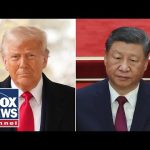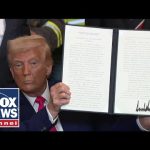The United States has taken a bold stance in its escalating trade conflict with China, as President Donald Trump announced an increase in tariffs on Chinese imports to a staggering 125%. This decisive move comes amid years of frustration over Beijing’s trade practices, which have long been criticized for undermining American industries and exploiting global trade systems. The administration’s approach signals a shift toward prioritizing national interests and economic sovereignty, even as it sparks intense debate at home and abroad.
For decades, China has employed strategies such as currency manipulation and state-backed subsidies to flood global markets with cheap goods, often at the expense of American workers. These practices have contributed to the shuttering of U.S. factories and the loss of millions of manufacturing jobs. By imposing these tariffs, the Trump administration aims to level the playing field and incentivize companies to relocate production back to the United States. As White House Deputy Chief of Staff Stephen Miller noted, this is about “restoring American industrial strength” and ensuring that middle-class families can thrive in a competitive global economy.
Critics argue that the tariffs could lead to higher prices for American consumers and strain small businesses reliant on imported goods. However, proponents contend that short-term economic pain is a necessary sacrifice for long-term national resilience. The administration has also emphasized the importance of reducing dependency on foreign supply chains, particularly in critical sectors like technology and defense. This strategy not only strengthens domestic industries but also enhances national security by reducing reliance on adversarial nations.
China has responded with retaliatory tariffs of its own, escalating the trade war between the world’s two largest economies. Beijing’s actions include targeting U.S. goods with an 84% tariff and threatening to restrict exports of rare earth minerals vital to American technology and defense systems. While these measures demonstrate China’s willingness to push back, they also underscore its vulnerability in a conflict where the U.S. holds significant leverage as a major consumer market.
This trade dispute marks a pivotal moment in international economics, as the U.S. reasserts its leadership in shaping fair trade practices. By standing firm against China’s coercive tactics, the Trump administration is sending a clear message: America will no longer tolerate being taken advantage of in global commerce. While challenges remain, this approach lays the groundwork for revitalizing American industry, protecting jobs, and securing a stronger future for generations to come.




